List of Authors
>>About this blog
Recent blog post
|
[Nyan,]
December 1, 2017 12:00
There are 27 antenna shops in Chuo Ward, and while you are in Tokyo, you can enjoy local specialties and souvenirs that can be said to be "this!", And enhance your feelings of actually going to the site.
Among such fun antenna shops, one of the most memorable things I personally visit is Nihonbashi Fukushimakan MIDETTE, an antenna shop in Fukushima Prefecture.
MIDETTE is a word that invites you to see like a dialect of Fukushima, and sake, fruits, seafood, mountain food, folk crafts, etc. are lined up in a narrow space.
As a sweet party, I'm always stuck in classics such as "Karinto Rusk" and "Madoru", and slightly sweet "Miso Senbei". At MIDETTE, a gift certificate with premium will be released from December 1st. The happy shopping ticket in Chuo-ku is also very advantageous, but this MIDETTE gift certificate can also be purchased for 6,000 yen for 5,000 yen, so if you buy it anyway, it is a familiar thing. I'm going to buy it again this weekend.
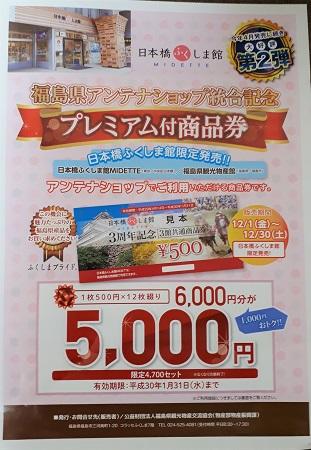 Please check here for access to the store. Please check here for access to the store.
↓
http://midette.com/shopinfo/
[Nyan,]
October 10, 2017 13:00
Today (October 9) is the day of inhabitant sports. Various sporting events were held in the vicinity of the Tsukishima Playground  . .
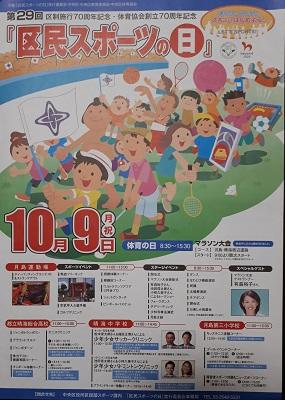
I have participated in the 5km section as a test of my hobby running skills. The guest runner is Yuko Arimori, a medalist for the second consecutive Olympic Games. What a luxurious guest ! !
Mr. Arimori, he really supports me with a loud voice that kills my voice, and this power is also boiling. At the start of elementary school students, Mr. Arimori is full of wonderful distribution like a "school teacher" in front of elementary school students who are moving freely. He heard that he has been supporting guests for nine consecutive years, and the participants who were in elementary school have already grown up.
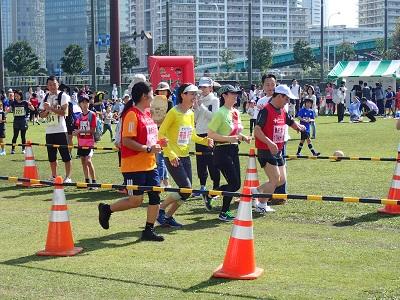
I envy the runners who supported Mr. Arimori while running side by side.
There was also a public relations filming group, Chuo FM Radio City.
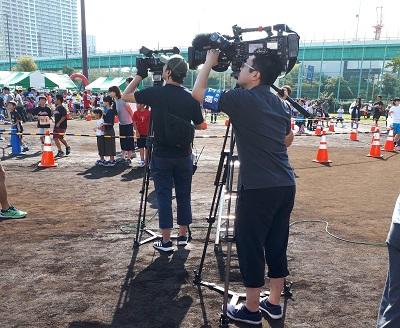
Well, to speak, looking at the back of a young junior and senior high school student who jumps out at the same time as the start, "There are many fast people! Well, uncle (I), I can't win the prize with this ... "I gave up early and ran at my own pace. The result is an unexpected prize. Oh ... Did you count the wrong number of people you thought you were running forward, or did you come before you thought by pulling it out little by little? (Result Arai!)
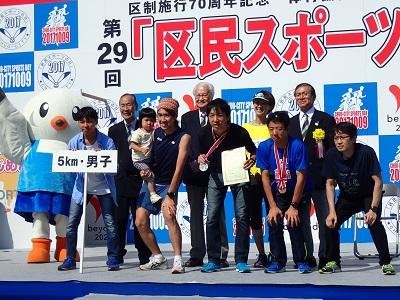
After the excellent award ceremony, we received prizes for the prize and had a good time.
I really want to enjoy a participatory event on the day of inhabitant sports, where various events are held with elaborate taste s. s.
[Nyan,]
September 29, 2017 09:00
Chuo-ku has an area of about 10.1 square kilometers, which is called "a town full of charm that shines even if it is small."
Ota-ku, the largest of the 23 wards of Tokyo, is about 60.4 square kilometers, Setagaya-ku, the second place is about 58 square kilometers, and Adachi-ku, the third place is about 53.2 square kilometers, and the average of the 23 wards is about 26.9 square kilometers. Even in comparison, Chuo-ku is certainly small. (It is said that it is the 22nd smallest after Taito Ward. Is it me who think it would have been the smallest one to come here?)
It is often said that Tokyo Dome is ○ in comparison of size, but what happens when you compare this with Chuo-ku? The area of Tokyo Dome is 46,755 square meters, including the building area. In other words, Chuo-ku is equivalent to about 216 Tokyo Dome.
By the way, the largest municipality is Takayama City, Gifu Prefecture, with a size of 2,177 square kilometers. This is about 216 pieces from Chuo-ku. Tokyo Dome x 216 = Chuo-ku x 216 = Takayama City, Gifu Prefecture. It's just a coincidence, but it's a bit interesting.
Don't worry. Various festivals and sponsorship events will be held in Chuo-ku as October approaches when autumn is coming soon.
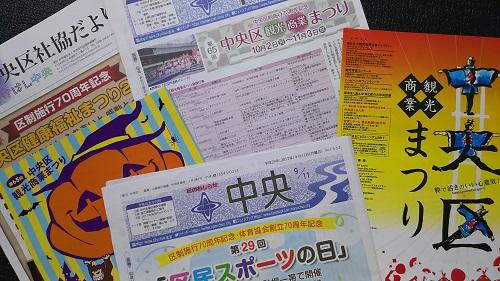
https://www.city.chuo.lg.jp/event/matsuri/calendar/calendar201710.html
https://www.city.chuo.lg.jp/event/matsuri/kankousyougyoumaturi.html
One of the things that surprised me to live in Chuo-ku is that there are many festivals and events anyway, for me who moved to several municipalities due to moving or relocating. For example, when I was a child who lived in Saitama, when I was a child, I only remember the summer festival at the end of July, so it's surprising that there are so many festivals with stalls.
I lived in Osaka City, the home of the Tenjin Festival, one of Japan's three major festivals, but there were not many festival events as one ward.
If you have a lot of effort or access to such an environment, I would like to go out every day and enjoy it to the fullest!
・・・ ・ While there are various indicators, if you say "the number of festivals per unit area", I think Chuo-ku is the best in Japan in local governments, but what about?
[Nyan,]
August 29, 2017 09:00
Many people may say that the Bon holiday is over and the summer vacation feeling is over.
Speaking of summer vacation, I go to work in Minato-ku, but looking around my seat, Aomori, Akita, Hiroshima, Ishikawa, Gifu, Nara, Niigata, Saitama ... Most of the members return home to their parents' homes. No, it's the level that if you're poor, people from Tokyo may be the least.
Naturally, the fact that people from all over the country gather in Tokyo has not started now, and writer Kafu Nagai wrote in "Boku Higashi Kitan" about restaurants in Ginza after the Great Kanto Earthquake (1923) "I'm entrusted to the management of people who came from Kansai or Kyushu every now," and the number of local people has decreased, and the number of local people has increased.
Isn't it one of the goodness and depth of Tokyo that absorbs the good points of the whole country and further develops the goodness to create a unique culture?
By the way, here, based on the "First Time Story Map" issued by the tourist association in Chuo-ku, "The Era where Kafu Nagai lived" (1879-1959) I would like to list the gourmet / food culture that was created.

・Fruit Parlor (1890)
・Oyakodon (1891)
・Pork cutlet (1899)
・Anmitsu (1930)
・Children's Lunch (1930)
・Leverfly (1932)
・Cutlet curry (1948)
・Hayashi Rice (1954), etc.
Looking back again, I felt that there were more things that were created in Chuo-ku during this era than I expected. It seems interesting to follow the story of Chuo-ku for the first time while filling the stomach.
[Nyan,]
July 4, 2017 14:00
It has become quite famous that Shibuya's scramble intersection looks fresh and cool to travelers from abroad, but when I first heard it, "Eh? What's better at that chased intersection?" I guess there were many people who thought it. At least I was one of them.
When overseas people say, "I want to touch Japanese things because I came to Japan," something that becomes "Japanese-like" may be too blended into our daily lives and it may be difficult to notice on the contrary. However, if you can feel attractive in everyday life, not only the famous shrines and temples, but also the buildings that everyone knows, this is an excellent content for us that you can enjoy without straining.
By the way, this time, I would like to approach the "back alley" of Chuo-ku. Just a daily life there. But for some reason, I think it's good to have a nostalgic place, but how does it appear in foreigners (of course, depending on the country)?
In addition, the back alley here is a road with "the width of the road that does not face the main street and does not allow cars to enter". Street corners that left a Showa-like atmosphere (facing the car street) are not eligible this time even if they have a taste.
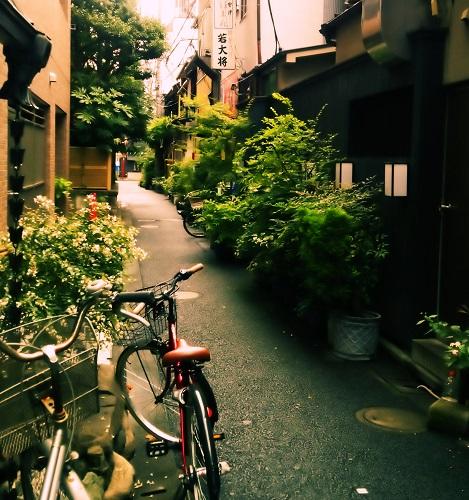
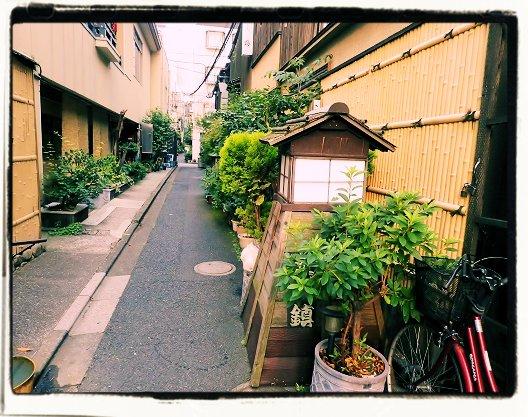
First of all, "the royal road behind the alley" ... it's a contradictory phrase, but isn't that the position behind the alley in Ningyocho? Great Kannon Terawaki is lined with historical and elegant buildings in narrow alleys where cars cannot enter, and mamachari is placed so as to sew between them. On both sides, potted green is accompanied by Aya. A refined space that seems to have a sense of life and has no trash when you look at your feet. Well, it's too bad. Even on tours that guide foreigners by bicycle, it seemed that many people took this camera.
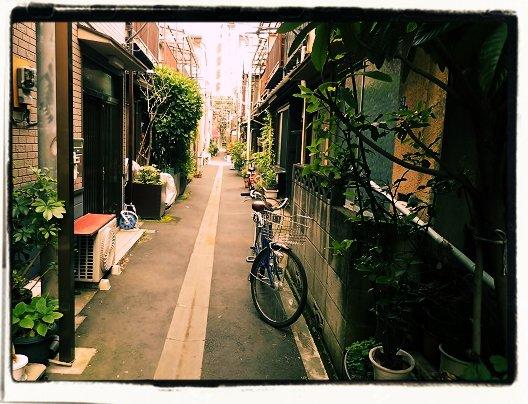 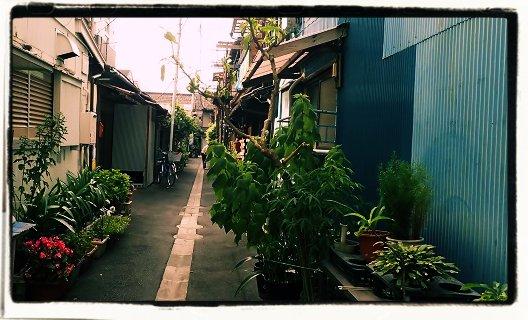
Next, I will go to Tsukishima. This is Ginza behind the alley! It is a treasure trove behind the alley that makes you want to shout. The living roads on the left and right of Monja Street (Tsukishima Nishinaka-dori), which is famous for monjayaki, create the atmosphere of the back alley as it is. In Chuo-ku, where redevelopment is progressing one after another, the space between buildings is countless, but the number of places that invite nostalgia as a living road is decreasing, but this is already a hangout behind the alley . Let's register in the Red Data Book now.
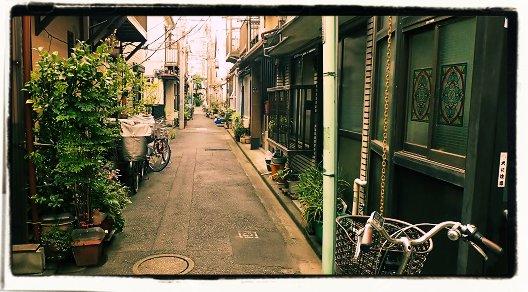
Finally, I went to Tsukuda. There are many street corners where cars can be reached, and surprisingly it was difficult to find "behind narrow alleys", but in this neighborhood lined with long-established Tsukudaniya-san, the scent of Showa drifts with the scent of Tsukudani and the scent of Showa. It's the right way to enjoy it to buy Tsukudani as a souvenir in such a space.
[Nyan,]
June 28, 2017 09:00
Until now, cherries  have been described as "amake" on anmitsu. Fruits that you can put in your mouth without any hesitation, saying that you are eating because it is wasteful. have been described as "amake" on anmitsu. Fruits that you can put in your mouth without any hesitation, saying that you are eating because it is wasteful.
Speaking of Western food, it is like parsley on a salad with a hamburger.
Speaking of vinegar pork, it doesn't matter if it's like pineapple, but it's attached for some reason ...
I have to scold myself who had such a feeling! We have to completely change our perception! What I thought was ...
No other, since I started eating carefully selected cherries made in Higashine City, Yamagata Prefecture, a friendship city of Chuo-ku . .
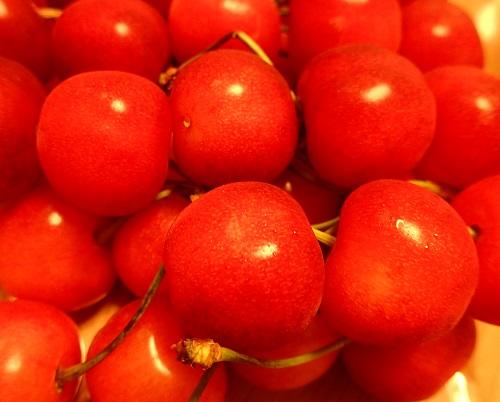
Some people may have seen the name of "Fruit Kingdom Higashine" by wrapping the community bus "Edo Bus" running in the city. I was worried about wrapping the Edo bus, so I participated in the "Higashine Sakurambo Marathon" (half marathon) held in Higashine City every June.
This running event in Higashine is a popular tournament that has been selected as one of the "100 Runnings". A lot of hospitality and hospitality are the secrets of the popularity, but the biggest feature is the enhancement of the "Cherry" aid provided on the way! While I was running, I greeted "the number of cherries I ate a day, the largest day in my history." The pace of eating as an excuse slows down, just remembers more than records. I was very satisfied with the time . .
Cherry carefully selected among Higashine products. When you have beautiful shining fruits, the elegant sweetness spreads in your mouth with "puffy" elasticity and the subtle acidity that complements it. This is delicious. After all, the real thing is different.
It is said that small but rich fruits make full claims ... Is it like Chuo-ku in Tokyo! ?
Please try delicious cherries.
(The photo shows the Higashi Cherry Marathon. An unusual course layout that allows you to run through the SDF garrison. You can also enjoy talks with celebrities in the running world, Kin, World Championships medalist Chiba and Ogiwara. )
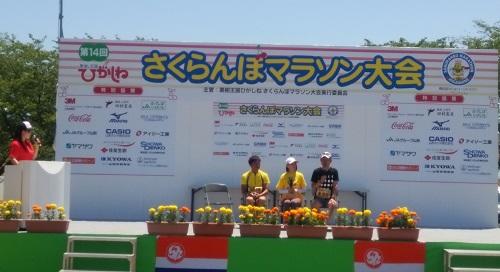 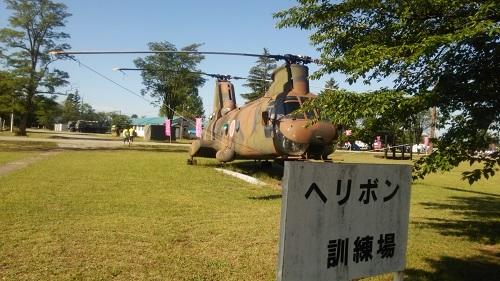
|
Links
|
 Please check here for access to the store.
Please check here for access to the store.














